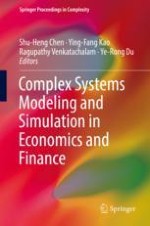2018 | OriginalPaper | Chapter
Measuring Market Integration: US Stock and REIT Markets
Authors : Douglas W. Blackburn, N. K. Chidambaran
Published in: Complex Systems Modeling and Simulation in Economics and Finance
Publisher: Springer International Publishing
Activate our intelligent search to find suitable subject content or patents.
Select sections of text to find matching patents with Artificial Intelligence. powered by
Select sections of text to find additional relevant content using AI-assisted search. powered by
